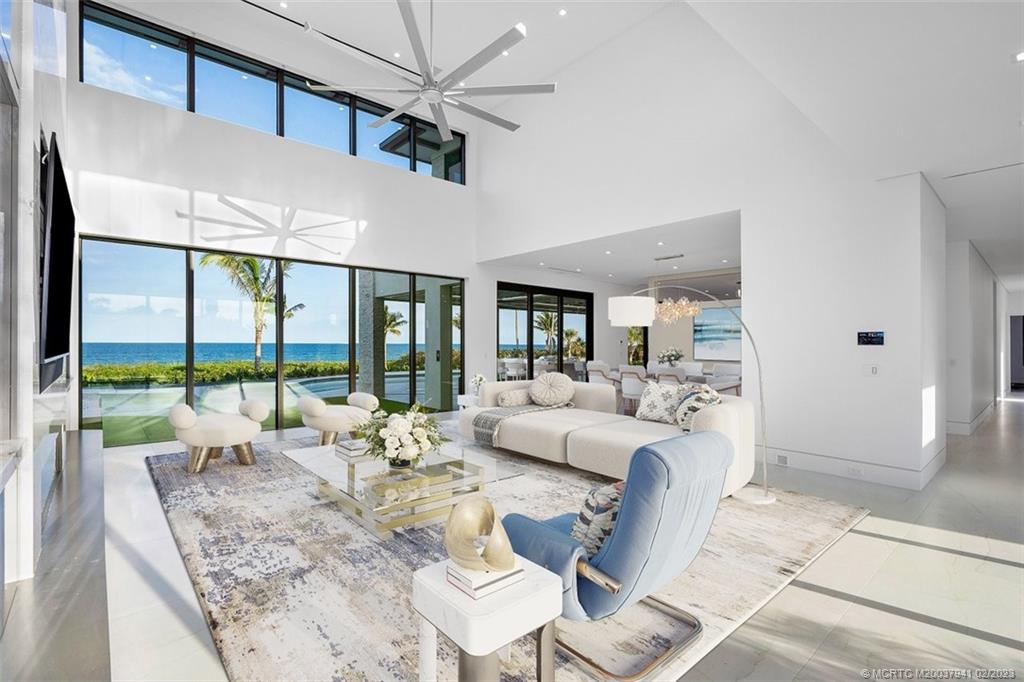Welcome to our comprehensive guide on the dos and don’ts of interior design. Whether you’re new to decorating or an experienced homeowner, understanding the fundamental principles and guidelines can have a significant impact on the overall aesthetic and ambiance of your home.
In this blog post, we will explore some of the most common mistakes people make when decorating their homes and provide expert tips on avoiding them. From choosing the right color palette to utilizing natural light, we’ve got you covered. So let’s dive in!
Importance of a Well-Designed Home
Before we delve into the dos and don’ts of interior design, let’s first understand why it’s so important to have a well-designed home. At its core, good interior design improves a space by making it better suited to its purpose. Whether you’re designing a bedroom for relaxation or an office for productivity, thoughtful design decisions can greatly enhance the functionality and ambiance of a room.
Stephanie Purzycki, a renowned interior designer, once said, “If the room doesn’t make you happy, it isn’t done.” And she’s absolutely right. Your home should be a place of comfort, joy, and self-expression. It should reflect your personality and provide a sanctuary where you can unwind and recharge. With these insights in mind, let’s explore the common mistakes people make in interior design and learn how to avoid them.
Common Interior Design Mistakes to Avoid
- Choosing the Wrong Color Palette
Choose the perfect color palette for your interior design by creating a cohesive scheme that complements your home’s theme. Select a dominant color for each room and incorporate complementary hues for depth and interest. Factor in the natural lighting to ensure colors appear as intended. Avoid the mistake of using too many colors or sticking to a monotonous scheme. Create the ideal mood and atmosphere with a thoughtfully curated color palette.
- Ignoring the Importance of Lighting
Lighting is crucial in interior design, yet often overlooked. Poor lighting dulls even the best-decorated spaces, while proper lighting enhances ambiance and highlights room features. To create a well-planned lighting design, combine natural and artificial sources. Maximize natural light with mirrors, sheer curtains, and blinds. Layer artificial lighting with overhead fixtures, task lights, and accent lights for versatility. Adjust lighting to suit activities in each area.
- Overcrowding the Space
In interior design, overcrowding can create a cluttered and overwhelming space. Prioritize functionality and practice restraint when furnishing a room. Consider the purpose of each item and its contribution to the overall design. Measure your space to ensure proper fit. Embrace negative space and allow your furniture and accessories room to breathe. Remember, less is often more in creating a balanced and harmonious interior.
- Neglecting to Measure and Plan
A common interior design mistake is neglecting to measure furniture before buying. Ill-fitting furniture can disrupt a room’s balance and proportion, resulting in an awkward atmosphere. Measure your space and consider the scale of each piece. Avoid extremes by finding the right balance between oversized and undersized items. Proper planning ensures harmonious furniture placement and a well-proportioned room.
- Matching Everything Too Perfectly
Avoid the urge to match everything in a room perfectly, as it can lead to a lack of visual interest. Embrace the concept of mixing and matching to create an eclectic and engaging space. Incorporate diverse textures, patterns, and materials to add depth and character. Combine vintage and modern pieces, experiment with contrasting colors, and blend different styles for a unique and personalized design. It’s the unexpected combinations that make a room truly memorable.
- Using Poor Quality Materials
Investing in high-quality materials is essential for an enduring and visually pleasing interior. While cheaper options may be tempting, they tend to deteriorate quickly and detract from the overall aesthetic. Prioritize durability and craftsmanship when choosing furniture, fabrics, and finishes. Opt for reputable brands and materials known for their longevity. Though quality may come at a higher cost, it will save you money in the long run by reducing the need for frequent replacements or repairs.
Interior Design Dos
- Creating a Cohesive Color Scheme
Creating a cohesive color scheme is essential for a harmonious and visually appealing space. Choose a dominant color for each room and build your palette around it. Add complementary hues and neutrals to create depth and balance. When selecting colors, consider their emotional impact and how they flow between rooms. A well-planned color scheme can enhance the overall atmosphere and create a seamless transition throughout your home.
- Utilizing Natural Light
Natural light is a valuable asset in interior design, as it can make a room feel open, inviting, and well-lit. To maximize the benefits of natural light, choose window treatments that allow sunlight to filter through while maintaining privacy. Strategic placement of mirrors can reflect and amplify the natural light, creating a brighter ambiance. Additionally, consider adding skylights or larger windows to bring more sunlight into your space, enhancing the overall aesthetic and creating a pleasant atmosphere.
- Incorporating Functional and Stylish Furniture
Functionality is a crucial consideration in interior design. When selecting furniture, prioritize pieces that serve a purpose and enhance the usability of a room. Look for multi-functional furniture that can save space and provide additional storage options. By combining style with practicality, you can create a comfortable and attractive living environment that meets your functional needs and enhances your daily life.
- Mixing Patterns and Textures
Adding visual interest to a space often involves mixing patterns and textures. This can be achieved through the use of different fabrics, rugs, and accessories. Mixing patterns can be intimidating, but the key is to find a common element, such as color or scale, to tie them together. Be bold and experiment with various combinations to discover what works best for your space and personal style.
- Adding Personal Touches
Your home should be a reflection of your personality and interests. To make your space feel truly unique, incorporate personal touches such as family photos, souvenirs from your travels, or artwork that holds sentimental value. These personal elements will infuse your home with warmth and character, making it a place where you truly feel at ease.
Interior Design Don’ts
- Overdecorating and Cluttering the Space
Maintaining a balance between personalization and clutter is essential in interior design. Avoid overdecorating by practicing restraint and being selective with your choices. Rather than overcrowding shelves and surfaces with numerous knick-knacks, opt for a curated approach. Showcase a few meaningful pieces that reflect your personal style and have a significant impact. By doing so, you can create a space that is visually appealing and allows each item to shine.
- Ignoring the Scale and Proportion
Scale and proportion are key elements in interior design that should not be overlooked. By understanding and applying these principles, you can create a well-balanced and visually pleasing space. Ensure that the size of your furniture, accessories, and artwork is proportionate to the dimensions of the room. Avoid overwhelming or undersized pieces that disrupt the harmony of the space. By paying attention to scale and proportion, you can create a cohesive and inviting environment.
- Following Trends Blindly
While it’s essential to stay informed about current design trends, following them blindly can result in a space that feels impersonal and generic. Instead, use trends as inspiration and adapt them to suit your personal style. Remember that timeless design is always in fashion, so prioritize classic elements that will stand the test of time.
- Neglecting to Consider Functionality
Functionality is indeed a key consideration in interior design. To create a space that is both beautiful and practical, it’s important to assess the needs of the occupants and design accordingly. Think about the activities that will take place in each room and how the furniture, layout, and storage solutions can support those functions. Whether it’s optimizing the kitchen for cooking and storage, creating a comfortable and functional living room, or designing a productive home office, aligning the design with the intended use ensures a space that is both visually appealing and highly functional.
- Disregarding the Flow of the Space
Creating a sense of flow and cohesion throughout your home is essential for a harmonious living environment. Disregarding the flow of the space can lead to a disjointed and confusing layout. Pay attention to the natural traffic patterns and consider how each room connects to the next. Use design elements such as color, lighting, and furniture placement to guide the eye smoothly from one area to another.
Why Watlee is a Great Resource for Home Decor
Not sure where to start with your interior design project?
Watlee provides expert advice and inspiration to help you navigate the world of home decor. Their team of experienced designers and stylists are always ready to assist you in choosing the right pieces and creating a cohesive look. Whether you need guidance on color schemes, furniture arrangement, or incorporating current trends, Watlee has the knowledge and expertise to make your vision a reality.
In conclusion, interior design is a delicate balance between art and science, and by following the principles and avoiding common mistakes, you can create a space that is both visually appealing and functional. Prioritizing functionality, maximizing natural light, and adding personal touches are key elements in achieving a unique and comfortable home.

